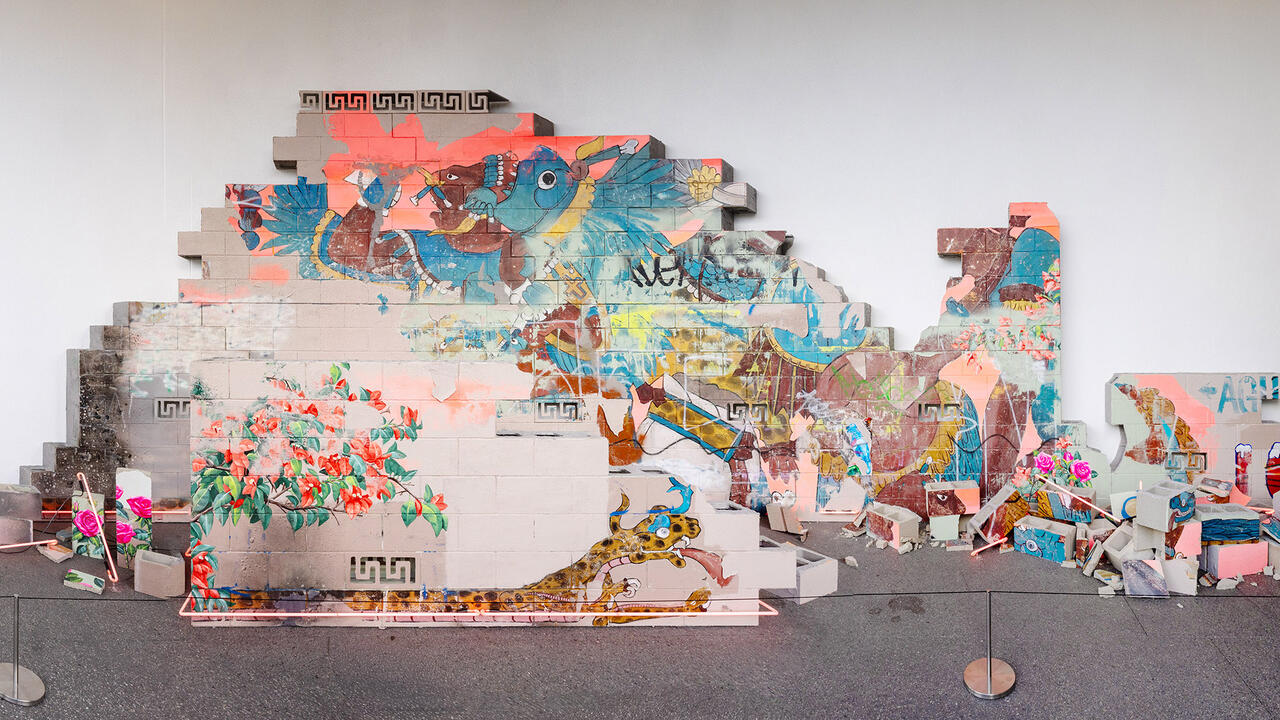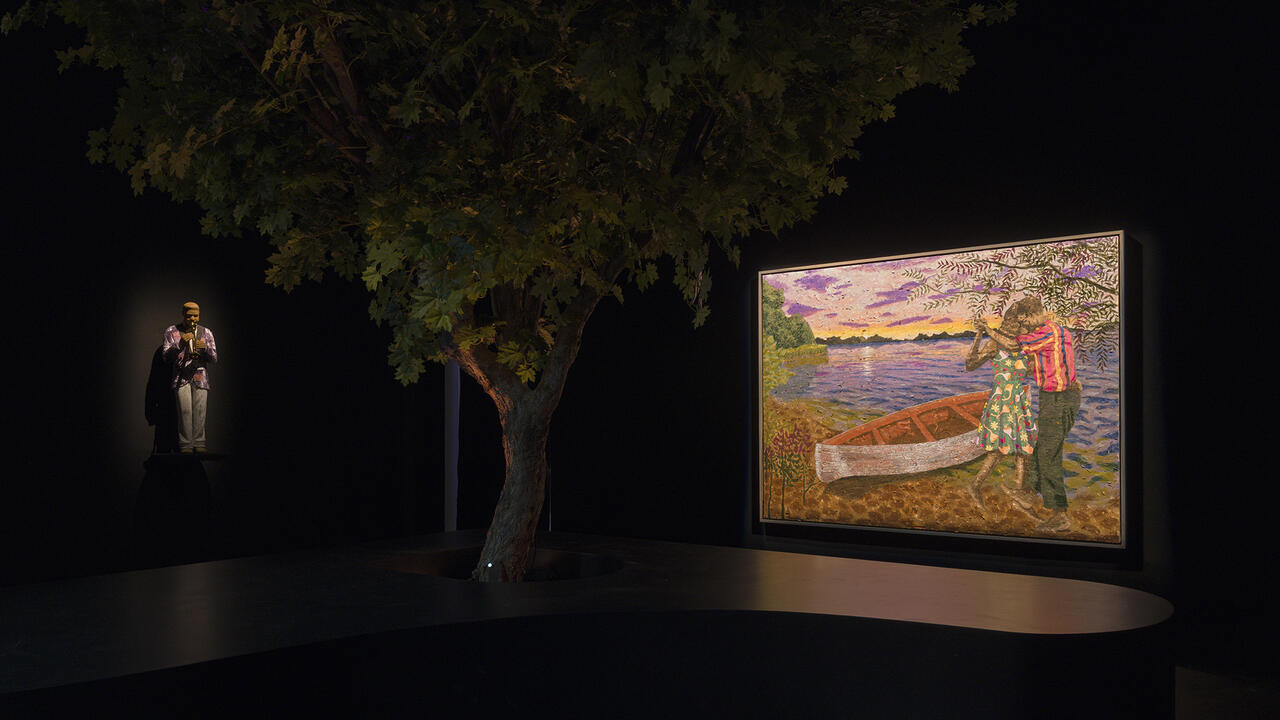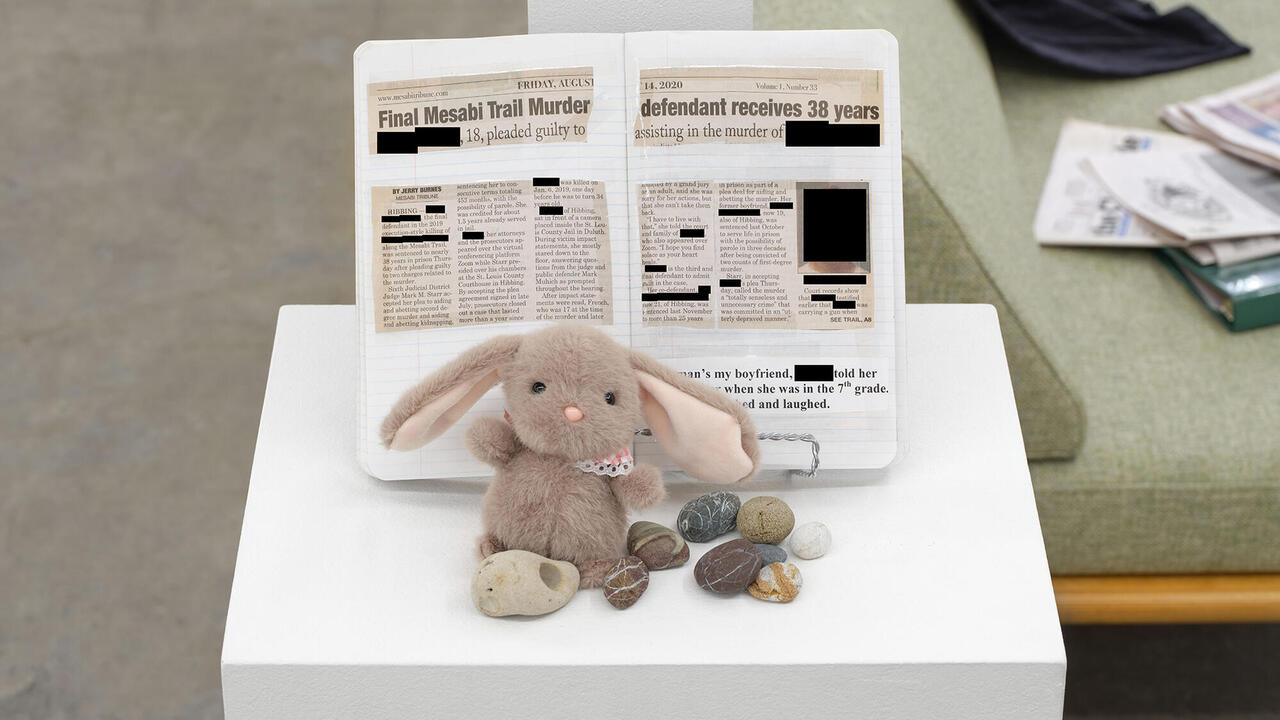Allan Kaprow
Museum of Contemporary Art, Los Angeles, USA
Museum of Contemporary Art, Los Angeles, USA

How could an artist thrive after Jackson Pollock? It was a rather crucial question in the aftermath of the artist’s death, detonating harsh factional battles, if not among artists themselves, then among the increasing number of critics, dealers and curators hunting for ‘the next Pollock’. Allan Kaprow was one of the first to express a feeling of orphanhood that would hasten a transformation of art practices in the late 1950s: writing in the first person plural, as though his voice stood for a full generation, Kaprow explained in his essay ‘The Legacy of Jackson Pollock’ (1958): ‘We were a piece of him: he was perhaps, the embodiment of our ambition for complete freedom.’
Kaprow’s early attempts to go beyond Pollock are clear in his ‘Environments’ of 1957, which quickly evolved from public daily rearrangements of strips of coloured rubber and draped transparent plastic sheets to the early ‘Happenings’ of 1958; Pastorale and the decisive 18 Happenings in 6 Parts. Nevertheless, even if formally expanding the field of action from painting, Kaprow’s initial Happenings were originally almost unnoticeable, created or performed outdoors, with the participation of only a few artist friends, eschewing Pollock’s bravura and the buzz surrounding him.
This is, actually, where Kaprow’s paradox begins: his life would be spent trying to reinsert the process of art-making into daily life, confusing the distance between the gallery and what could happen in the street or the backyard, reacting against ‘dumb museum’ practices, teaching three generations of ‘un-artists’ and even as early as 1967 obliterating the ‘Happenings’ format he had invented, when it became ‘a lifestyle’ option in the McLuhanesque media landscape.
Kaprow’s admirable resistance to the way art is used (by the market, critics, institutions and advertising agencies) came out of his teaching as an art historian, which was inseparable from his practice as an artist. Kaprow critically addressed the mise-en-scène of America’s daily lifestyle and consumerism (for example, the ritual of women licking jam off a car in Household, 1964). However – and this distances him from his colleagues – his ‘Happenings’ were generally waggish, though precisely regulated, events unfolding according to a brief recurring catalogue of guidelines (or a ‘grammar’). His ‘scores’ are composed only of loose words detached from a more complex poem and punctuation signs (brackets, dashes and full stops) or straightforward commands (‘People shout in subway just before getting off, leave immediately’). Kaprow clearly distanced himself from more spectacle-oriented or sexually liberating actions: commenting once on Al Hansen’s work, he observed: ‘Happenings were quietly exploratory.’ This actually allowed Kaprow’s early ‘Happenings’ to be later ‘reinvented’ (as he coined it), as they were this spring and summer in several events organized across Southern California, in conjunction with his retrospective at LA MoCA.
The show reflected Kaprow’s austerity and his reservations about any museum’s embalming of events, actions and objects that were to disappear immediately after the fact. Struggling with this issue, the curators created a mode of ‘presentation’ that required audience participation. Acetate copies of photographs, for example, were available to visitors to place manually on overhead projectors, while hundreds of scores, notes, flyers and posters lay on tables in a long, gloomy room at MoCA, alongside continuous projections of some of the Activities of the 1970s and ‘80s. More problematic were the ‘reinventions’ of Kaprow’s ‘Environments’, or settings for ‘Happenings’, including the ironic Apple Shrine of 1960, a circus-like display that glaringly contrasted with the faded quality of such surviving assemblages as Rearrangeable Panels (1957). Two catalogue texts attempt to justify this curatorial approach, but even if realized by Kaprow’s closest collaborators and friends (including Paul McCarthy), the cleanliness of it all and the overt anachronisms (the series of early 21st century candy-coloured iMacs or automatic paper shredders in Apple Shrine) are visually distracting, recalling 1990s ‘relational’ gallery installations more than any deliberately provocative displays of the 1960s. These physical ‘reinventions’ run counter to what Alex Potts defines in his catalogue essay as the ‘imagining process’ that Kaprow instituted as an inevitable step away from ‘Pollock’s legacy’: ‘The ability of those beyond the circle of immediate participants or initiates to imagine the physical immediacy of a Happening was necessarily constituted, to a large degree through language’, thus prompting everyone else ‘to imagine the mental and psychological processes and artistic gestures that once brought it into being’.
Kaprow’s legacy will surface not in shows like this – although they are probably worthwhile catalysts for further research and inspiration – but actually through language: his notes and scores, his booklets for invisible activities, his collections of ephemera, including photographs by others that he considered ‘happenings’ of a sort, such as the self-immolated Buddhist monks in Vietnam or the burning of scrub forests prior to the construction of Brasilia: events that he considered more important than ‘artistic’ happenings.
We were saddened to hear of Olivier Debroise's sudden and unexpected death in Mexico City this summer, aged 56. A French citizen born in Jerusalem in 1952, Olivier lived in Poland, France, Morocco, and Brazil before settling in Mexico City in 1970, where for nearly four decades he energetically dedicated himself to the cultural life of his adoptive country. A prolific scholar, curator, filmmaker and novelist, Olivier began his career as an art critic for various Mexican newspapers and journals. After a period of concentration on academic and curatorial projects, as well as being instrumental as founding curator of the new museum of contemporary art at the National Autonomous University of Mexico, opening this autumn, he recently expressed enthusiasm at the prospect of writing art criticism with renewed frequency. He had recently been conducting research at the Getty Institute in Los Angeles on the relationship between Allan Kaprow and Argentinean artists during the 1960s. For anyone fortunate enough to have known, admired or worked with Olivier, he will be greatly missed.






















